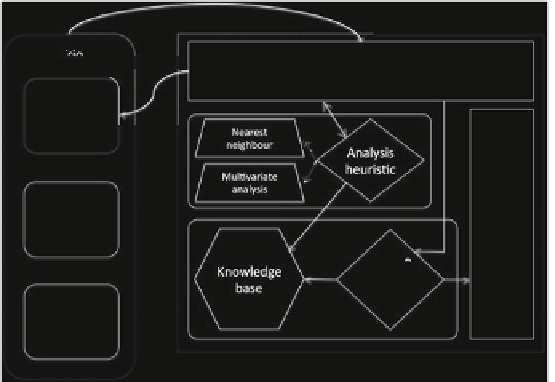Information Technology Reference
In-Depth Information
14.5.2 Handle as Jazz Muscician
Whereas Handle
cond
is designed to work with score-based, structured music, and to
deviate only minimally from a known form, Handle
jazz
is designed to explore the
field of unstructured music in the form of improvised, free “fusion jazz,” an area
explored by other systems such as OMax.
2
As formerly, the architecture of Handle
jazz
consists of two major components,
one running in MATLAB and the other in Common Lisp. The most notable change
is that the MATLAB component is the controlling client, rather than the Lisp system.
The MATLAB client interfaces with FILTER and MaxMSP via a simple set of Ope-
nAudio commands sent periodically via the network, which provide information on
the current tension level of the three players as integers in the range 1-7. These values
are used to look up the current 'perceived state' of the performance for FILTER, and
appropriate information is returned. If, however, the state had not been encountered,
a best guess is made, derived from a weighted nearest-neighbor heuristic, and the
state is marked for formal calculation using an implementation of the music calcu-
lus in the Lisp-based SNARK automated theorem prover. Due to the length of time
required to perform such operations, all logic calculations are currently done off-line
between performances. An overview of the instantiation of the Handle architecture
corresponding to the work reported on in the present section is given in Fig.
14.6
.
Fig. 14.6
Instantiation of Handle
jazz
architecture
2
OMax generates interactive improvisational music in collaboration with a human performer,
via statistical and learning methods, in a manner similar to how FILTER operates [
3
]. However,
OMax differs from CAIRA as a whole in that it does not have a component that is a counterpart to
Handle
jazz
, which uses logic-based reasoning to influence how the improvised music is generated.





























Search WWH ::

Custom Search